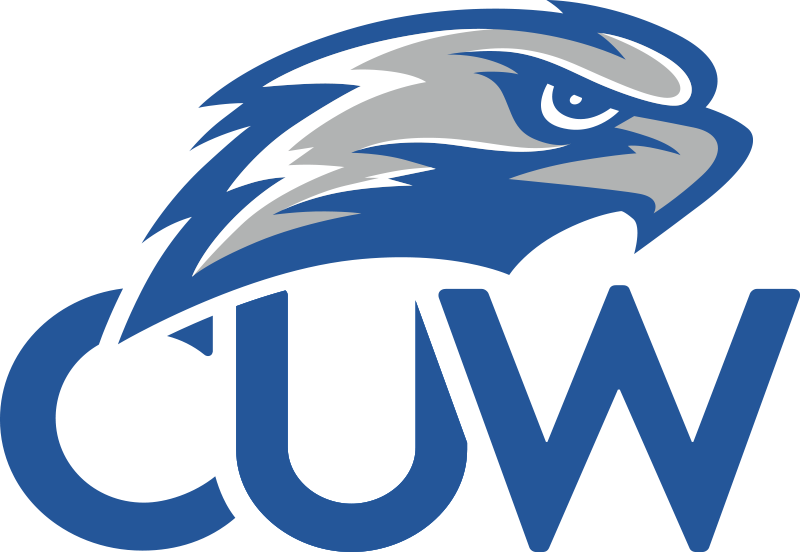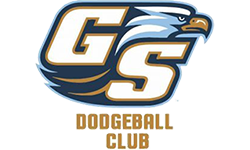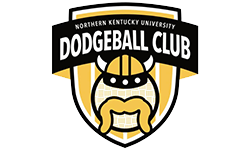It’s crazy to think that the national championship game will be played in less than one week from today! Since many of you have never participated in a NCDA national championship tournament before, we are going to look at what exactly that is going to look like and how to best set yourself and your team up for success during the tournament.
– Tournament Format –
The national championship tournament is broken down into two different days of matches. The first day (Saturday) is used for additional seeding and cross regional play purposes followed by the second day (Sunday) which is a single elimination tournament.
On Saturday your team will play 3 games against different opponents. Due to time constraints and the number of games we need to get through, each match on Saturday will have abbreviated halves of 20 minutes each. The selection process that we use to determine your opponents for the Saturday matches is as follows; 1 game vs an unique opponent, 1 game vs a similarly ranked opponent, and 1 game vs a requested opponent. We try to stick to this equation as closely as we can, but there are some rare circumstances where not all 3 conditions are met. When you submitted your registration for the tournament, you made a selection of 2 teams you would most like to play against, if you did not know what you were doing when you did that contact an executive board member asap and we can probably change your selections. The matches played on Saturday will be worth double points in the ranking system, so wins and losses could have a huge impact on your final seeding for the Sunday elimination tournament.
Once the final Saturday game is finished, we will have a slight pause for Mr. President to run the numbers and then the tournament bracket will be released. The bracket will be a standard single elimination tournament bracket with play in games for the seeds 12-21. Once teams are eliminated they will be required to ref the next round of games. Eliminated teams are only expected to ref one additional round, but if people want to stay and help or even just watch they are more than welcome to do so. Our intentions are to stream every game played during the weekend so make sure you come looking good and with tons of energy for the camera!
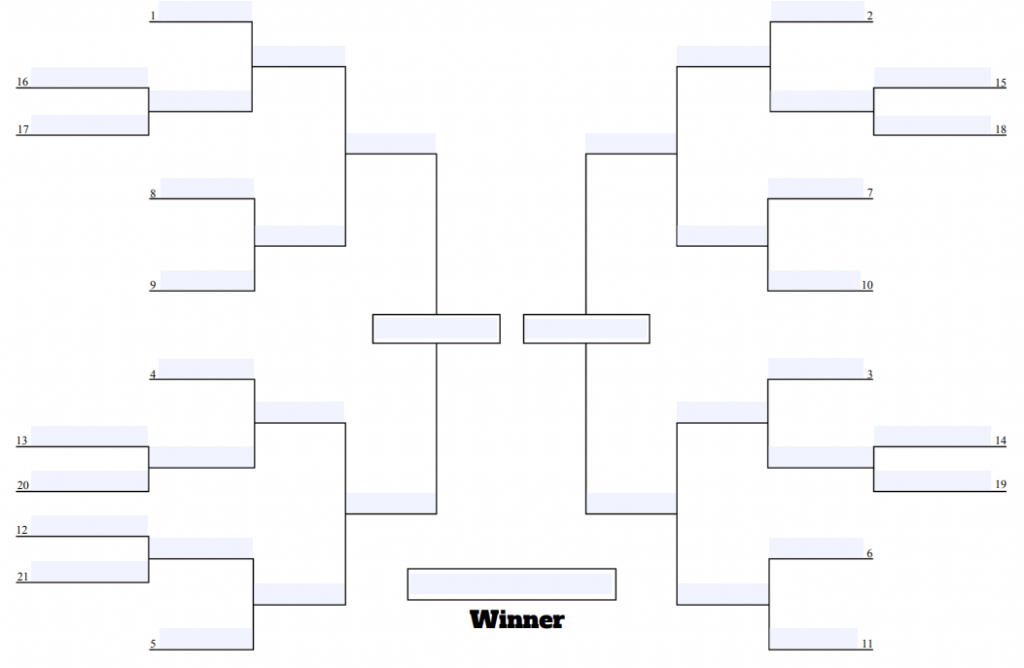
– How to Survive –
Now that you know what the weekend is going to look like, let’s talk about the real reason that I am writing this; how to survive the tournament. No matter if you are a title contender or a team looking to get some valuable experience, nationals weekend is a doozy. Three games played in one weekend is usually enough to satisfy your need to hit people with things and make your muscles a little sore. This tournament is different though. The winners of the tournament will have to play 7-8 matches with each team averaging 5 games played within 36 hours. That stat alone is exhausting enough, now try factoring in that over half of those games will be played all out with elimination looming for those who lose.
Key Point #1 – Bring a Full Roster!
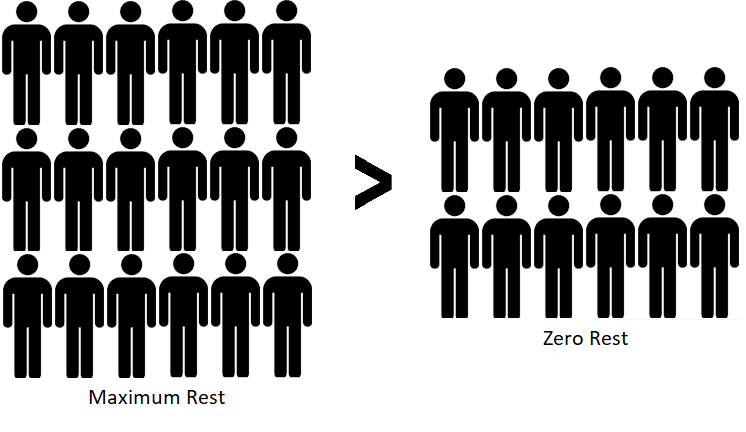
My first key survival point is maybe the most important one. Having bench players to divide up the tournament load is absolutely essential. If you do not have 18 committed players coming to nationals, get out there and find some more people! There is a very small financial difference in 12 players going to a tournament vs 18, but there is a massive competitive advantage to bringing every single extra player that you can. Any extra time that your top players can get resting during less important matches could be the difference maker in giving them extra energy needed to win during the knockout stages. We all know that dodgeball is fun and worth traveling for and nationals is an absolute blast, but new players often are nervous about dedicating time/money for something they aren’t sure they are going to enjoy. If you are able to, give new players a discounted rate to come. It will be worth it in the long run when everyone is able to get more rest time and I can almost guarantee that once your new players experience nationals they will be hooked and become full time members of your team.
Even if you have a full roster signed up to go to nationals, if you have other people who would be interested in attending you should make every effort to allow them to come and spectate. These people can help shag balls, count for your team, motivate the team, but most importantly they will also get to experience nationals and will come back next year hungry to get better.
I will make one last attempt to really drive home this key point by giving you a case study of the 2017-2018 CMU team. Head to head in single matches this team was devastating. They posted an eye popping record of 28-2 over the season and beat GVSU every time they played in a normal season match (4x) by at least 2 points. The problem with this team was they were complacent with where they were and with the guys they had. They did not recruit that season and only ever brought the minimum number of players to tournaments. When big tournaments came around they would hold strong up until fatigue started to wear on them. Their two losses both came at the end of long tournaments. One at the Michigan Dodgeball Cup and the second in the national championship game. An absolutely dominant team finished the season with no trophies solely because they refused to recruit and bring more people to tournaments. Do yourselves a favor and bring a full roster, it will help you find both long and short term success as a program.
Key Point #2 – Throw Efficiently
This point goes hand in hand with the previous point, basically the key idea here is to do less work to win your games. By being efficient with your throws, you can get the same number of wins while putting less stress on your body. I calculated out that the minimum number of throws made by the championship teams is 1372. That averages out to 115 throws per player with a roster of 12. 115 throws really does not sound all that bad, but remember that is the absolute bare minimum to avoid shot clock violations and has everyone on the team throwing the exact same amount of times. Most games will see teams throwing around three times the minimum amount with team throws and strategies that focus on throwing well before the shot clock is up. There is also the factor that most teams have players on them that make throws much more often than other players on their team. Puting all of these factors together we come up with a situation where there may be players that end up throwing over 400 times during the national tournament. That is a lot of stress to put on your body.
So here are a few ways to decrease and manage that stress. First, see key point #1 up above. Second, let your less experienced players make plays. There is definitely a time for the best throwers on a team to be making throws, but oftentimes they can and should hand balls off and let others make a few throws to lighten up their load. You will have to decide when is the right time to be doing this for your own team. All too often I see top tier teams going up 4 points against younger teams and they still have their best throwers making all the plays. You are going to run out of gas if you come into nationals with no plan of managing your throws.
The best way to improve your throw efficiency is to make sure your throws connect with their target. Throws made to just reset the shot clock are useful at times, but ultimately they do not progress the game and result in wasted physical effort. Especially for top level throwers; make your throws count, get kills, get points, then let your younger players coast out the win. Nationals is an endurance event. Be smart and conserve your energy.
My last point on throwing efficiency is to close the distance between you and your opponent. It’s an undeniable fact that your legs are much stronger than your arms. Put them to use to survive nationals. Run your opponents down and hit them in the feet. A 10 foot throw takes way less energy to make than a 28 foot throw. Close the throwing distance to help keep your arms fresh for the later games.
Key Point #3 – Take Care of Your Body
Injuries suck. There is nothing worse than having to sit and watch your team struggle in a tournament and not being able to help them because you are injured. For this reason, please take care of your bodies now until the end of nationals. This month you should be resting any injuries you currently have. There is very little to be gained from pushing through an injury in practice right now. Instead, if you have something lingering give it a rest and work on areas that you can. That could include watching film, stretching, icing, or working out areas of your body that are not injured.
All players, regardless of injuries, should be working on getting their bodies physically ready for the onslaught that is nationals. Working on endurance is important, even just running a few laps before/after practice will help you out greatly. Developing a stretching routine will keep the injury bug away too. Generally it’s recommended to warm up first, then do some active stretching before practice, followed by static stretching at the end of practice.
After making it through the next couple weeks, taking care of your bodies on nationals weekend is next. I understand that college kids like to have fun and do questionably intelligent things, but make sure you are also eating enough and keeping hydrated (with water). I have seen plenty of cramps take players out and have personally played in a tournament where my fingers have locked up completely after not eating or drinking all day. Bring food to the tournament, or have a plan for getting food.
Key Point #4 – Come With a Plan
Reading this is great and all, but if you do not act on it now and develop a plan with your team it will all be worthless come the tournament. Once the tournament starts, things are going to happen quickly. There will be so much going on that you will scarcely have time to gather yourself and your team together to make changes. For this reason you need to develop a plan now with your team. Talk about everything you can think of. What will your team do if you get up big, or down big. How does that change on Saturday vs Sunday? Who do you want to have balls in their hands? How are you going to manage people’s throw counts? All of these things are important to plan for now versus during the tournament.
You should also develop a prevailing strategy with your team. What kind of formation will you employ the most? Who do you want and where do you want them on the court? Come in with a plan that focuses on your own team’s strengths and then once you learn your opponents you can tweak your strategy to counter your specific opponents.
Key Point #5 – Have Fun!
I know I just got a bunch of eye rolls, but honestly NCDA nationals weekend is my personal favorite sporting event of the year. It really is awesome seeing all the teams in one place giving it their all slinging balls back and forth at each other. Use this weekend to build relationships with your teammates, many of these people will be your lifelong friends and having these memories to look back on is great. The relationships you build here will also have a lasting impact on your players staying in the club and keeping it going for future years. You will also get to meet all of the other players in the league and see the different playing styles that other teams have in person. This will give your team ideas on what they can change next season to come back better than ever.
When the day is finished, only one team will be crowned as National Champions, but I hope and expect everyone to leave thinking that it was the best damn weekend of dodgeball that they have ever experienced!






